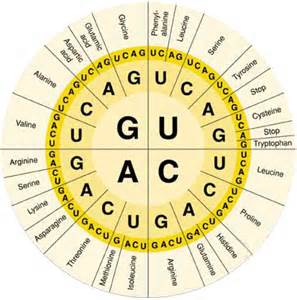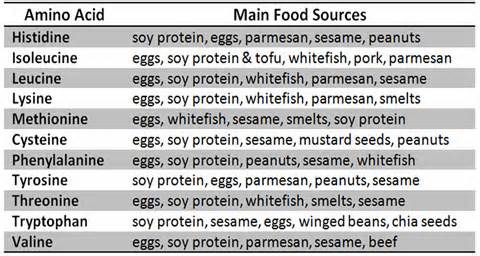|
| |
Amino Acids and Health
Balanced amino acids are important to mental,
emotional and physical health. Homeopathic remedies and nutrient therapies
will help to rebalance amino acids for optimum health.
Contact Us to learn more!
Read also about Neurotransmitters.
Click Here to Buy Remedies and Supplements from Homeopathic Remedies Online Store

What Are Amino Acids?
- Amino acids are the building blocks of protein. There are 22
amino acids.
- Out of these 9 are
essential which means that the body
cannot
make them and they must be obtained from food.
- 11 are non- essential, meaning that the body can make them.
- During the digestion process, whole-food proteins, like
milk or meat or eggs are broken down into their elemental parts, which are
amino acids.
- The entire natural and continuing pain relief system of
the human body is fueled by amino acids.
Amino Acids in
Alphabetical Order
The ones in red means "essential" which means it
can not be made in the body it must come from food.
- Alanine
- Arginine
- Asparagine
- Aspartic acid
- Cysteine
- Glutamic acid
- Glutamine
- Glycine
- Histidine
- Hydroxyproline
- Isoleucine
- Leucine
|
- Leucine
- Lysine
- Methionine
-
Phenylalanine
- Proline
- Serine
- Threonine
- Tryptophan
- Tyrosine
- Valine
|

Low
Blood Sugar
Low blood sugar is called hypoglycemia.
A blood sugar level below 70 mg/dL
is low and can harm you. You are at risk for low blood sugar if you have diabetes
and are taking diabetes medications. A rise in blood amino acid concentration as
the result of protein metabolism stimulates the secretion of both glucagon and
insulin, so their blood sugar remains stable.
-
L-arginine is an amino acid
that helps regulate low blood sugar. L-arginine improves circulation and
plays a role in your cardiovascular health including blood pressure,
particularly circulation in fine blood vessels. L-arginine forms the molecule,
NO (nitric oxide), which signals in the relaxation and dilation of blood
vessels. Many studies have confirmed that taking L-arginine can result in
improved circulation and blood pressure. Dysfunction of
the interior wall of blood vessels is usually first observed in the smallest
blood vessels for example those found in the retina of the eye. L-arginine
may therefore also be beneficial to people suffering from circulatory disorders
related to diabetes. L-arginine improves insulin sensitivity.
-
L-carnitine is an amino acid that
can lead to significant improvements in glucose metabolism.
It
improves the utilization of sugars in the blood and reduces insulin resistance.
It is important for burning fat and transporting fatty acids into the
mitochondria of the cells. It regulated of blood sugar levels and supports those
with diabetes naturally in the daily management of their blood sugar levels.
|
Low
Blood Sugar - Symptoms
(Treated with Arginine, Carnitine)
Glutamine is a powerful
amino acid that heals the gut.
It is calming and when opened on to the tongue stops low blood sugar cravings.
Order Glutamine here
- Agitated, easily upset,
nervous
- Double or blurry vision
- Eating relieves fatigue
- Fast or pounding heartbeat
- Feeling uneasy, nervous, or anxious
- Headacheds
- Hunger, intense cravings for
sweets
- Irritable, cranky, shaky,
headaches - worse if meals are missed
- Lightheaded if meals are
missed (hypoglycemia)
- Shaking
- Sugar, starch or
wine/alcohol cravings
- Sweating
|
Catecholamines
Catecholamines are
a group of neurotransmitters that are from the amino acid
tyrosine. Tyrosine is ingested directly from
dietary protein and it then sent to
catecholamine-secreting neurons where many kinds of reactions convert it to
dopamine, norepinephrine and eventually to epinephrine (adrenalin).
Catecholamines are hormones made by the adrenal glands and these glands are on
top of the kidneys. Catecholamines are released into the blood when a person is
under physical or emotional stress. The main catecholamines are dopamine,
norepinephrine and epinephrine (formerly called adrenalin).
|
Low Catecholamines Symptoms
Catecholamines are: Epinephrine (adrenaline), norepinephrine (noradrenaline) and
dopamine
(Tyrosine)
Order Tyrosine here
- Apathy, no motivation
- Attention Deficit Disorder
(ADHD)
- Craving carbohydrates, sugar or alcohol
- Cravings for coffee, caffeine, drugs
- Depression
- Easily bored
- Lack of drive and low
motivation
- Lack of energy
- Lack of focus (ADD)
- Procrastination and
indecisiveness
|
Endorphines
Endorphins are produced during
strenuous exercise
by the pituitary gland and the hypothalamus in the brain that controls the
autonomic nervous system, the system responsible for involuntary actions
including a sense of emotional wellness. They are produced during strenuous
exercise by the pituitary gland and the hypothalamus in the brain that controls
the autonomic nervous system, the system responsible for involuntary actions
including a sense of emotional wellness. The are small, protein molecules
that are produced by cells in your nervous system and other parts of your body.
Endorphins work with sedative receptors that are known to relieve common pain.
These analgesia-producing receptors are located in your brain, spinal cord and
other nerve endings. Endorphins are not a single molecule, but actually come in
several forms, and can be anywhere from eighteen to five hundred times as
powerful as any man-made drugs and are not addictive.
Endorphins
and adrenal corticotrophin hormone (ACTH) are chemically similar. Both are
composed of very long chains of amino acids. Both are made side-by-side in the
pituitary gland. One molecule of each is secreted
simultaneously from the pituitary. When a noxious pain signal arrives at this
anatomic site, endorphin and ACTH are simultaneously secreted and explains why
elevated adrenal secretion occurs with attendant tachycardia and hypertension at
the same time endorphin is attempting pain amelioration. This makes for a potent
trauma team. Unfortunately, individuals with genetically inadequate endorphin
production and/or whose production has been exhausted by the demands of chronic
pain and dietary protein deficiency, can run low in this most critical storage
of pain-modulating neurotransmitters. The production of one molecule of
endorphin requires up to 20 amino acids.
|
Low
Endorphins Symptoms
(DPA: D-phenylalanine)
DPA, a non-nutritive amino acid
is available alone or bound to I-phenylalanine (LPA) as DLPA
It helps with food addictions and other types of addictions.
It can be used for acute or chronic pain and can be used as an adjunct
support.
- Big desire for
certain foods, behaviors, drugs or alcohol
- Crying or tearing up
easily
- Eating to soothe your
mood, or comfort eating
- Heightened sensitivity to
emotional pain
- Heightened sensitivity to
physical pain
|
GABA - Gamma-Aminobutyric Acid
GABA is the
body’s natural muscle relaxant, tranquilizer and nerve calmer. It helps
induce relaxation and sleep and balances the brain by inhibiting over-excitation.
Anxiety is also regulated by GABA. Lower levels of
GABA are associated with higher levels of anxiety.
GABA is the most abundant inhibitory
neurotransmitter in the brain.
GABA
is a non-protein that functions as an inhibitory neurotransmitter. It is
an amino acid and also as a neurotransmitter. It helps
induce relaxation and sleep and balances the brain by inhibiting over-excitation.
GABA contributes to motor control, vision and many other cortical functions. GABA also stimulates the anterior pituitary, leading to higher levels of Human
Growth Hormone (HGH). Human Growth Hormone contributes significantly to muscle
growth and also prevents the creation of fat cells. HGH depletion is prevalent
in adults over the age of 40 may be responsible for sleep disturbances or
interrupted sleeping patterns. Some studies suggest that the neurotransmitters
norepinephrine and serotonin play a role in panic
disorder.
GABA is helpful for providing calmness to the body in times of
stress and anxiety. It is also a precursor to another important
neurotransmitter, gamma-hydroxybutyrate (GHB), which is a natural sleep
inducing compound in the brain which encouraged the body to produce
tryptophan, which in turn is the natural precursor to the sleep
neurotransmitter, serotonin.
Seratonin
Serotonin is a chemical created by the human
body that works as a neurotransmitter and
is derived from the amino acid L-tryptophan.
It is regarded by some researchers as a chemical that is responsible for
maintaining mood balance, and that a deficit of serotonin leads to depression.
Serotonin is a chemical created by the human body. It works as a
neurotransmitter. Serotonin is created by a biochemical conversion process.
Serotonin is manufactured in the brain and the intestines. The majority of the
body's serotonin, between 80-90%, can be found in the gastrointestinal tract.
The serotonin that is used inside the brain
must be produced within it. Serotonin can affect mood
and social behavior, appetite and digestion, sleep, memory and sexual desire and
function. An association has been made between
depression and serotonin. Increasing the serotonin levels happens with sunlight, exercise and diet.
Some of lists of above symptoms are from the website by Trudy Scott, CN at
https://www.everywomanover29.com/blog/amino-acids-mood-questionnaire-from-the-antianxiety-food-solution/
| |
|